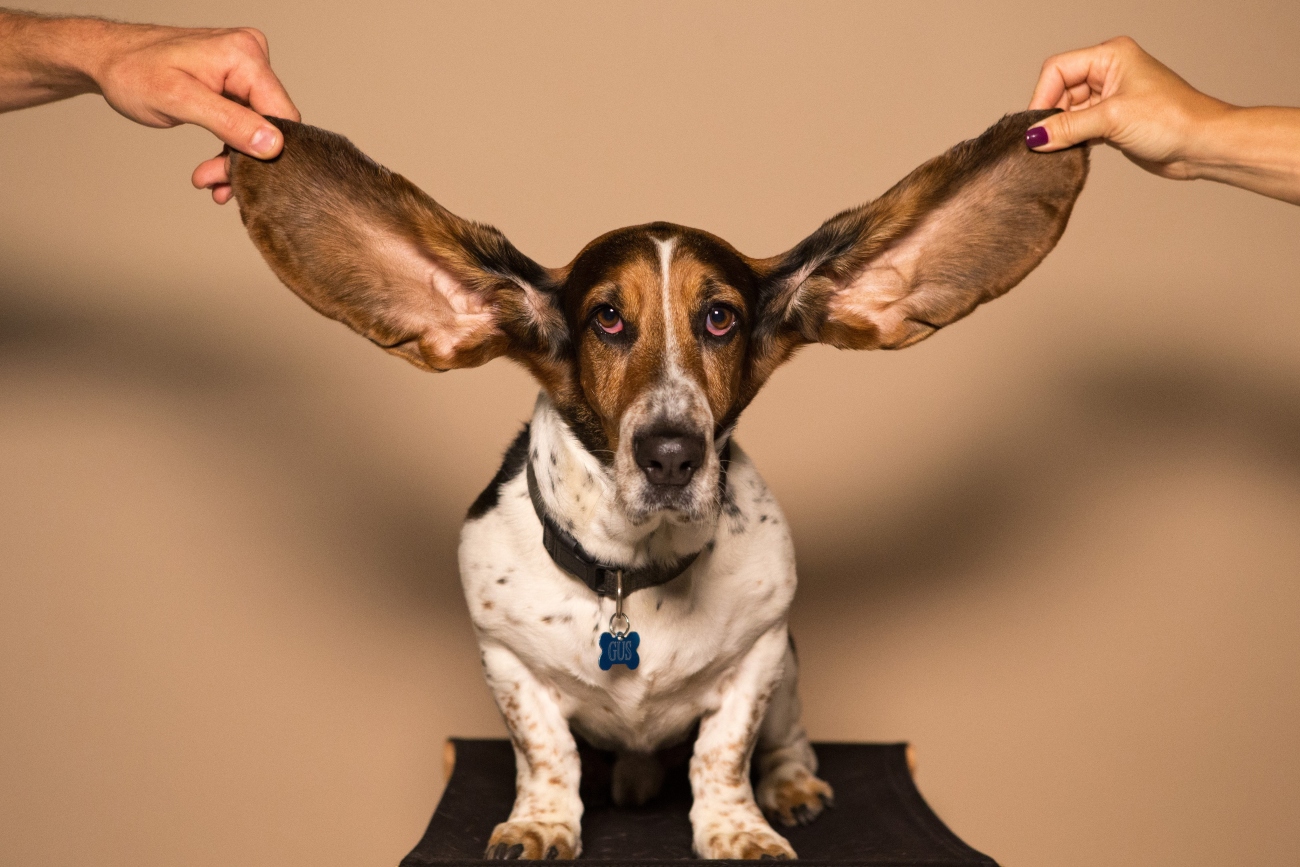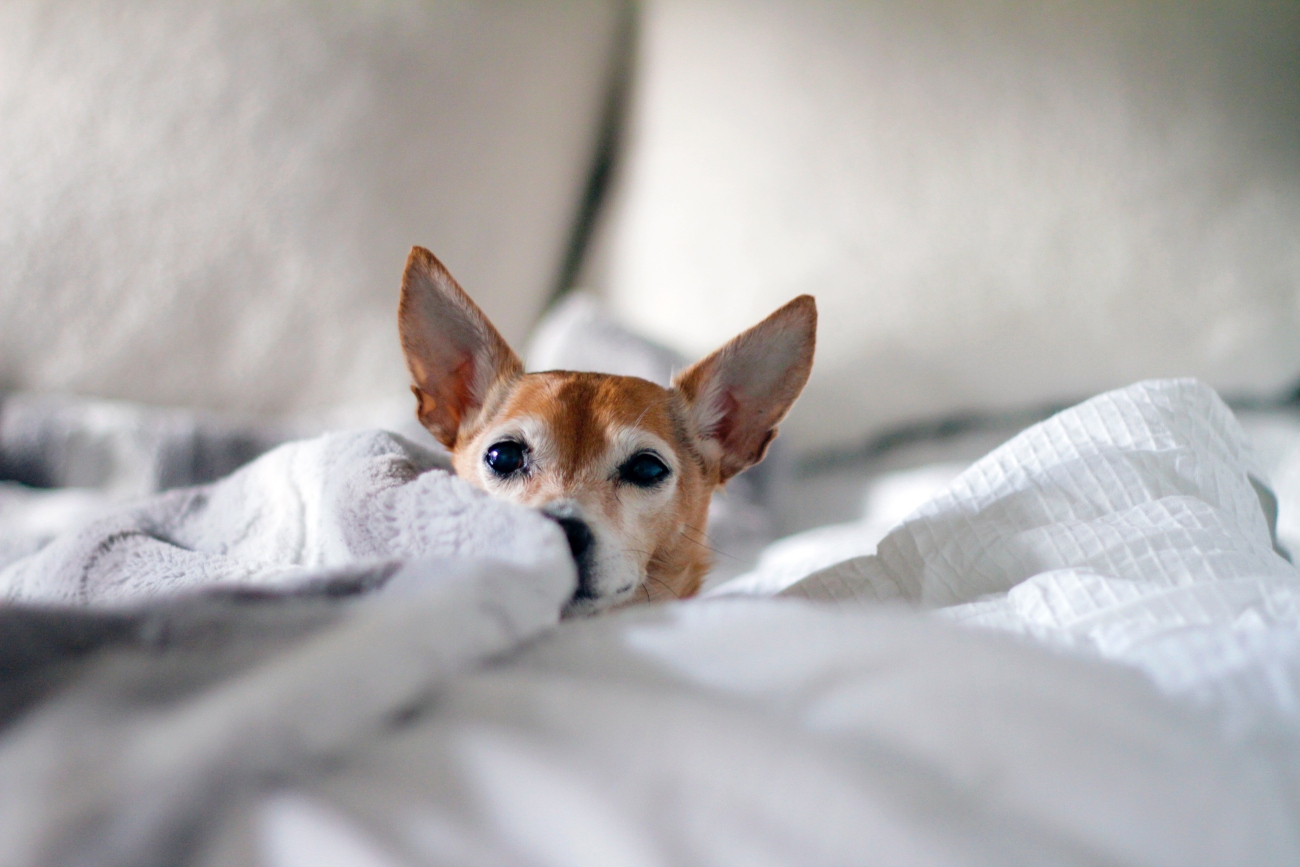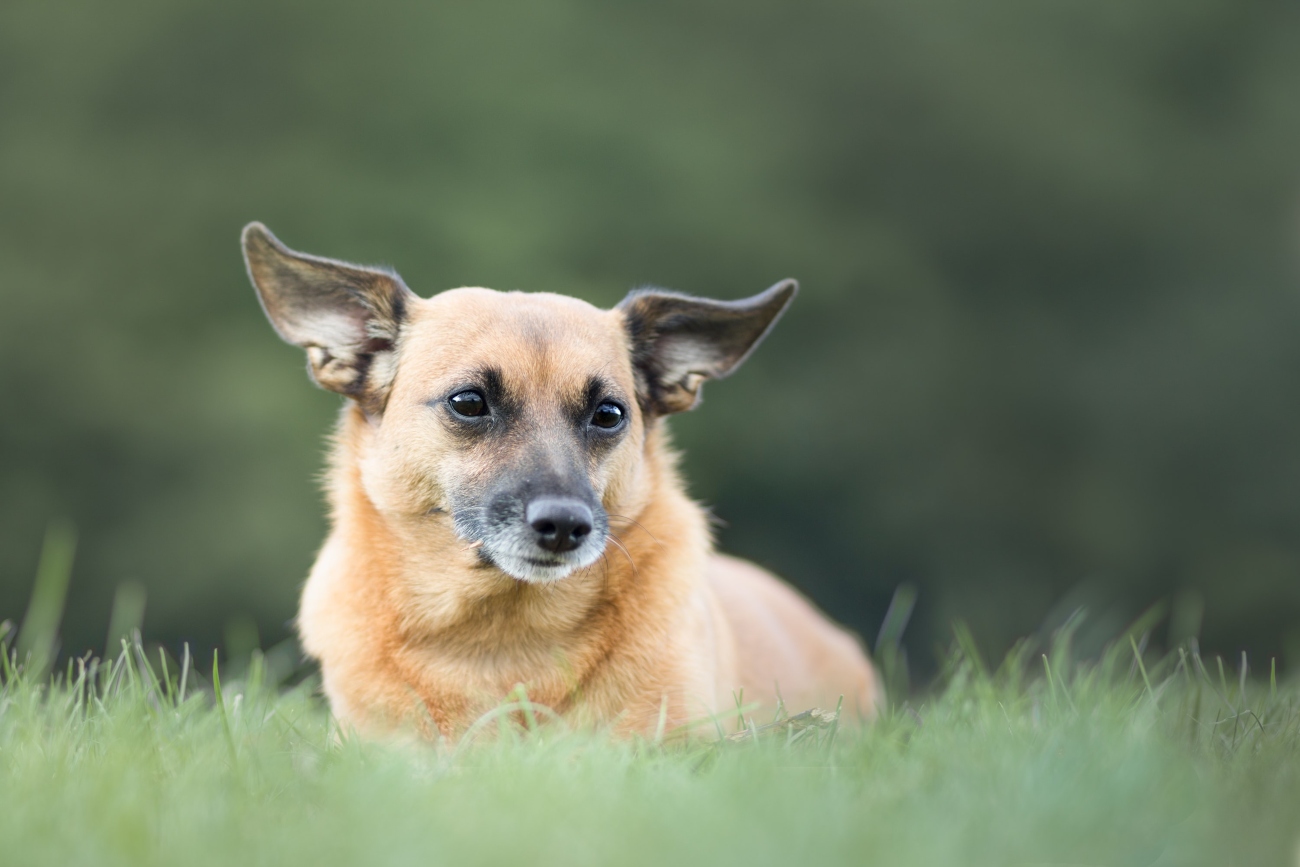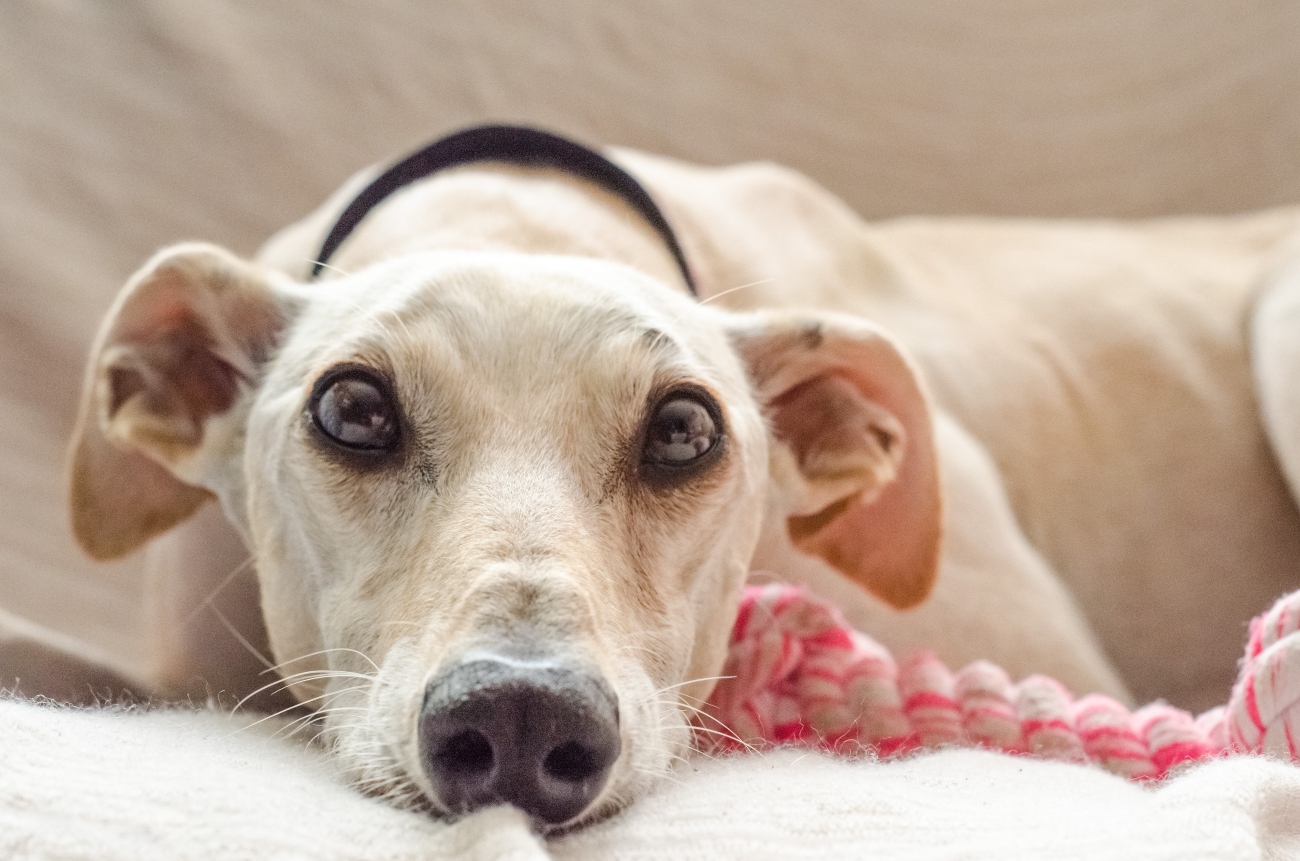
What is vestibular disease in old dogs?
8th November, 2021
If your older dog suddenly starts to lose their balance, and seems distressed and bewildered, this can be an upsetting experience for both of you.
However, in many cases this temporary confusion and loss of balance is due to a condition known as vestibular disease – and the good news is that this condition often clears up relatively quickly, leaving your dog with no lasting damage.
In some cases, treatment may be required, and your pet insurance for older dogs may prove useful here.
Read on for the facts about vestibular disease in older dogs.

Vestibular disease: the basics
The most common signs of vestibular disease are a loss of balance, a head tilt and flickering eye movements. A dog with vestibular disease will also have the unpleasant sensation that everything around them is spinning – in this way, the disease is a little like vertigo in humans.
The disease is caused by something affecting the dog's vestibular system, or balance centre, which is situated in the inner ear. Apparently most common in older dogs, it can develop very suddenly.
However, most dogs will start to feel an improvement in their symptoms within just two to four days, and should go on to make a full recovery within a few weeks.
If you think your dog may be showing signs of vestibular disease, you should contact your vet – and if they seem distressed, or are vomiting, it's definitely best to seek an emergency appointment.
What are the symptoms?
Vestibular disease is caused by something interrupting the workings of the balance centre – which, as its name suggests, is the part of the brain that controls balance and coordination.
Unsurprisingly, a common sign of the disease in dogs and other animals is a loss of balance. This will be apparent in your dog leaning to one side, falling over, and acting somewhat distressed and disorientated.
A constant head tilt, as they try to compensate for this loss of balance, is also common. They may walk around in circles, or simply stand with their legs wide apart, trying to steady themselves. Finally, they may display flickering eye movements, known as nystagmus.
The disease can make its presence felt in other ways. For example, the balance centre is situated close to the area of the brain that controls emesis, or vomiting. This means that animals experiencing disturbances to the vestibular system are likely to feel nauseous and to be prone to vomiting.
What's more, the balance sensors are situated close to the hearing sensors within the ear – and also to those nerves that control the movement of the lips and eyelids. As a result, vestibular disease can also result in loss of hearing and drooping of the facial muscles (facial paralysis).
What causes vestibular disease?
As we've seen, vestibular disease is brought about by a problem in the dog's balance. But what causes this?
Old age is one major contributing factor. Geriatric, or idiopathic vestibular disease, is the scientific name for the strain that affects older canines. To date, veterinarians and scientists haven't been able to pin down the exact cause of the disease in older dogs specifically.
Elsewhere, however, the condition can be caused by a problem in the middle or inner ear – an infection or inflammation, for example, or a tumour or polyp. A similar malfunction in the brain (again, infection, inflammation, or a tumour) can also produce the disease.
Finally, certain medications can have a toxic effect on the ears and can, in this way, bring about vestibular syndrome in dogs.
That’s why it’s so important to get a proper diagnosis from your vet, so you can be sure you’re treating the right thing.
Research by the Royal Veterinary College found that dogs with flat faces – French bulldogs, King Charles spaniels and springer spaniels were at increased risk of the disease.

Assessment and treatment
If your dog is showing any of the signs of vestibular disease, you should get in touch with your vet as soon as possible.
The treatment your dog will receive will depend on the underlying cause. For example, if the disease seems to be related to old age, they may well improve after two to four days, with the benefit of some dedicated home nursing (we'll go into this in more detail further down) and, if required, some anti-sickness medication.
You may be able to care for your dog at home but, if the symptoms become severe, an overnight stay at the vets may be required.
On the other hand, if an ear infection looks to have been the cause, they will very likely need a course of antibiotics, along with some other medication – some anti-sickness drugs, for example.
There may even be a need for some specialist surgery, in order to drain the middle ear of whatever fluids have built up. In this case, you might have to be a little more patient in the wait for a full recovery, as ear infections can take several months to clear an ear infection.
The importance of early diagnosis
Once again, you should get your dog seen by a vet as soon as they show any of the signs we mentioned above. Many of the symptoms of vestibular disease can also be early signs of more serious conditions.
These include a stroke, brain tumour, inner ear infection and seizure. It's essential, therefore, that a vet is able to assess your dog as soon as possible, so that they can either rule out these conditions or begin treatment for them.
The vet will want to make a few assessments of your dog in order to confirm or rule out vestibular disease. These will include checking their eye movements (a rolling eye movement, for example, will suggest that your dog has suffered a stroke). They may also want to lift up your dog's paw and flip it over. If your dog can flip their paw back the right way again this will, conversely, rule out a stroke.
Once these assessments have been carried out and vestibular disease has been diagnosed, you should – in most cases – be able to help your dog to get better at home.
However, if your dog is vomiting and at risk of dehydration, they may need to be hospitalised and put on a drip to receive fluids intravenously. Hospital treatment will be expensive, so your pet insurance for senior dogs may well come in useful here.
Your pet should improve within days – but if they don't, your vet may want to carry out some more tests. These might include a CT or MRI scan, an ear swab, or a spinal tap (where a sample is taken from the fluid that surrounds the brain and spine). These tests will help with a diagnosis and a decision on the next steps. There may be further treatment required, which again may be covered by your pet insurance for older dogs.
How to nurse your dog at home
Thankfully, in many cases, vestibular disease is a relatively mild condition, from which your pet will recover fully within weeks.
In these cases, you can safely keep your dog at home, with no need for an expensive stay with the vet. There are just a few guidelines to follow in order to keep them safe, reassured, and on the route to recovery.
For example, your pet will probably struggle to get up and move around the house. For this reason carpets, with the grip and friction they offer, will be a better option than slippery hard floors. If the floors in your home are mostly hard, we recommend putting down some rugs or mats to help them get a grip.
As dogs grow older and their balance and agility decreases, carpets will in any case be an easier option for them.
You will want to keep your dog within a relatively small area of the house, to remove the danger of them walking into things or falling over and hurting themselves.
This area should feature only soft floors and furnishings. They should not be allowed to climb stairs during this period – their poor sense of balance will bring an increased risk of falls and broken bones.
Your pet may also need help with going to the toilet. They may need to be supported while walking, or perhaps even carried. Depending on your dog's size, you may need to enlist some help here! A blanket or towel under their stomach can be useful in helping them to stay balanced and supported.
If your older dog suffers from toilet troubles, read our top tips on coping with incontinence.
Lastly, it's essential that your dog keeps eating and drinking regularly throughout this time. They may find it more difficult: they may even be experiencing feelings of nausea, which will make them less inclined to eat. Nonetheless, you must make sure they stay nourished and hydrated.
You may need to hand-feed them for a few days. They should be able to feed themselves before long – just make sure that both food and water are within easy reach.
And remember, pet insurance for older dogs through Petwise can also provide senior food contributions.
What's the longer-term outlook for older dogs with vestibular disease?
The good news is that, for many dogs, the outlook is relatively positive. Most canines that develop vestibular disease in old age will improve significantly within two to three days, and will recover completely within a week or two. You may find that certain signs and behaviours remain – for example, your dog may retain that head tilt they showed during the disease's most active phase.
However, as we've seen elsewhere – for example, in how they learn to cope with diminished eyesight – dogs are extremely adaptable animals. They will probably learn, relatively quickly, to adapt their movements to this new head-tilting behaviour.
It is possible that your dog may suffer more than one episode of geriatric vestibular disease. However, if you follow all the advice and treatments we've set out here, your pet should cope just as well the second or even third time around.
When the vestibular disease has been brought on by something other than simple ageing, there are a variety of outcomes. For example, if your dog has developed a condition such as an ear infection or polyp, they should respond well to treatment.
Similarly, if the condition has come about because your pet has reacted badly to a medication, they should improve rapidly once that medication is removed or substituted.
However, in a few cases – such as a severe infection, or a tumour – the outlook may not be so good. Sadly, if your dog is struggling badly with the disease's symptoms, and your vet believes that recovery seems unlikely, the kindest course of action may be to put them to sleep. Your pet insurance for older dogs through Petwise will offer a bereavement helpline and farewell cover to help you at this most difficult time.

How much will it cost to treat vestibular disease?
Once again, the costs associated with treating vestibular disease will very much depend on the seriousness of the disease and on its causes – whether simple ageing, or something more serious, such as a tumour.
By monitoring how well your dog recovers from the disease, you'll be able to tell fairly quickly how expensive the treatment will be. A swift recovery may not require any medical treatment at all – merely the adaptations and home nursing techniques that we discussed above.
However, some cases of vestibular disease may require longer-term treatment (sometimes including a spell in a veterinary hospital), or the services of a specialist vet. In these cases, costs for treatment will inevitably mount up. We'd recommend some pet insurance for older dogs to help you cover any unexpected costs.
Get specialist pet insurance for older dogs
We know that you will want to keep your beloved dog in the happiest and healthiest state possible throughout their senior years. And our specialist pet insurance for older dogs can help with this.
Benefits of cover arranged through us can include:
• 24-Hour Vet Helpline
• No co-payment excess applied
• Senior food contribution
Contact us today to find out more.